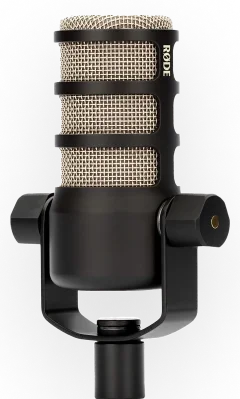This week on the Product Deepdive, CEO Jeromy Sonne walks us through the Decibel self-serve programmatic ad buying platform. Learn how Decibel provides the tools to enable campaign setup in as little as five minutes, including AI-generated creatives. Tune in now!
Podcasting would not be where it is today without the advertisers that helped us get to $2bn last year, and will continue to help us grow this year. Those advertisers stood with us through the ups and downs of the pandemic, the influx of new capital into podcasting, and everything in between. They know one, very clear fact: podcast advertising works.
They didn’t stumble into podcast advertising by chance. They’re innovative risk-takers looking to explore new channels and opportunities to drive the most benefit for their brand. And they’re more than willing to explore all the different ways that podcasting can work when presented with a compelling case.
But, sometimes they just want to buy their baked-in ads in peace. Sometimes, they’ve built their strategy exactly how they want and are finding success with it. And sometimes, we’re alienating these buyers, who make up a majority of our industries revenue, by refusing to sell them inventory the way we did yesterday in the quest to innovate how we sell our inventory tomorrow.
We possess all the tools to accomplish the goals of both sides, but the breakdown between technical processes and business decisions is starting to make things cloudy.
Why Baked-In Has Gone Stale
It’s time we called it quits on baked-in ads.
Real 180 there, right? Let’s clear up some confusion. Baked-in refers to the technical distinction of the ad being part of the audio file that podcasters upload to their hosting platforms. That’s not to be confused with episodic buying, which is the concept of an ad being assigned to a specific ad placement every single time that episode is downloaded.
On a technical level, baked-in ads expose publishers to a substantial amount of risk.
They require an entirely separate method of campaign monitoring since they aren’t being served through the hosting platform. Which also means that they can’t be monitored and accounted for competitive separation with dynamically inserted ads of any kind. For measurement, publishers will find themselves even further exposed. Prefix analytics pixels are all or nothing, and that’s all we get to use when it comes to measuring baked-in ads. Publishers either apply the prefix URL to the entire show, which is great for internal use, or choose not to implement it at all as there’s no granular way to associate a prefix URL only to specific episodes.
Alternatively, embedded ads – which we all have to agree to stop calling “faked-in ads” – allow a publisher to provide advertisers with everything they love about baked-in, but powered by dynamic ad insertion. Publishers can set the ad to 100% share of voice for a specific episode and set it to unlimited impressions, replicating a forever baked-in ad in an operationally sound way. They’re able to put actual ad tracking and verification on the campaign, instead of the entire show. And they’re even able to update the creative without having to edit and re-upload the episode.
But none of this matters unless we get on the same page when it comes to business terms.
Buying Preferences
Baked-in ads provide a ton of comfort for advertisers. If there are four ad placements when the episode goes live, it’s really unlikely that one day that episode will be re-uploaded with double the amount of ads. The more likely outcome is when you’re pitched to buy the next episode, you’ll find out you’re one of eight instead and have the option to pass.
Embedded ads, episodically purchased and dynamically delivered, provide operational ease for the publisher. They allow the entirety of their ad sales to be managed the same way, increasing efficiency and lowering risk. They allow a publisher to appropriately compare their selling styles: episodic or impression based. Direct or programmatic. New episodes, older episodes, or full catalog. There are many different strategies to compare, but it can be taxing to do that over multiple different methods of sale.
By leveling the playing field and utilizing the same technology for all types of ad serving, we enable all sales options to be considered. We make it easy to accommodate advertiser preferences or to allow publishers to judge whether or not something is in their best interest to provide. Relying on low-tech solutions to enforce buying preferences is not a good look when we can take full advantage of our technology and better define what it is we’re selling and buying.
And that’s the key: comparing everything, identifying what advertisers actually want to buy, and understanding the price points for each type of offering as the market adjusts based on the flow of demand. And as prices increase toward specific preferences, advertisers will continue to explore new offerings to get the most value out of podcast advertising at a price that returns the investment they need to call it a success.
Wrapping It Up
At SXSW we held our Q1 Podcast Business Leaders Summit and had a panel full of ad buyers of all sizes and all experiences with podcasting. That panel highlighted to me that there is still a substantial appeal to host read embedded ads. The endorsement from the personality might ultimately not net a substantial gain for the added cost, but in the grand scheme of things that cost is still incredibly affordable compared to other advertising channels.
It’s difficult to take an industry seriously when it’s still using jargon like “faked-in” and “baked-in” instead of more easily-understood counterparts. “Inserted” and “embedded” do the same job of distinguishing between announcer-read and host-read.
There’s a strong push for podcast advertising to go impression based, focusing on reach and targeting the listeners over direct buys. Much of that push comes from the desire to attract large brand awareness campaigns from advertisers who’ve yet to explore podcasting. I have no doubt that we’ll continue to see growth in those channels, direct, network-wide, and programmatically. But today, most publishers have unfilled inventory. And today, most of the advertisers that helped get us to $2bn have been actively spending with us for quite some time, and have preferences in how they want to buy inventory that should be honored.
Speaking of preferences: it’s also worth noting this idyllic post-baked-in future would need to accommodate the large audience of independent podcasters who aren’t part of the ad-tech ecosystem. Even if podcasting adtech killed baked-in tomorrow, a significant portion of podcasting is independent producers who either haven’t experimented with programmatic or have no idea it’s available to them. The onus will be on the ad side to empower and educate the many smaller fish in our big pond.
So today, my advice is that we set ourselves up for operational succession a way that does not limit how we sell our inventory and how we interact with each other. Rarely is it a good thing to leave technically-sound inventory unsold while there is active demand for it.












































































































































































































